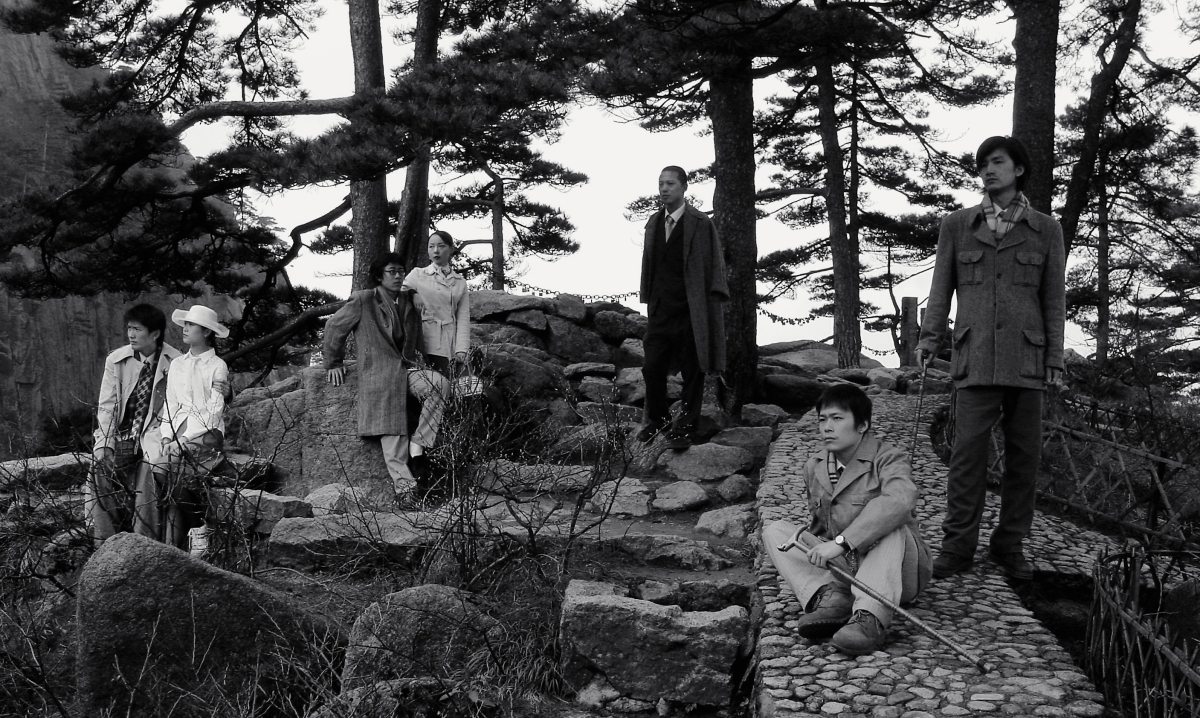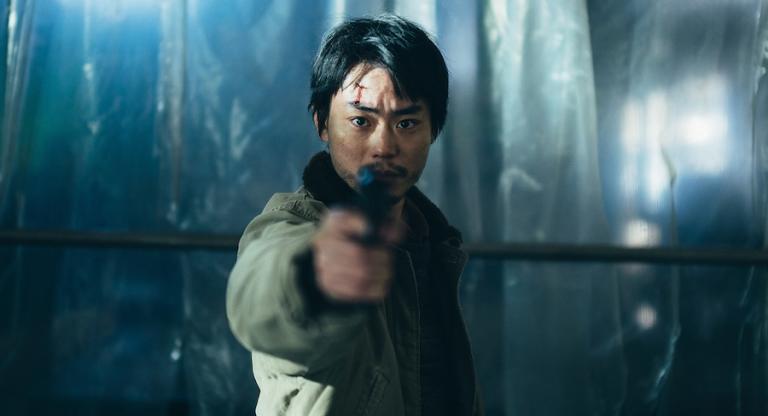The Chinese installation artist Yang Fudong’s probing of the boundaries between life and art got its most extensive exploration in his five-part project Seven Intellectuals in Bamboo Forest, now screening at Asia Society once per day until early August. Each part was produced on a year-per-year basis between 2003 and 2007, in such a way that each successive part is a little longer than the previous one. While all five parts were shot on black-and-white 35mm film, they were subsequently transferred to DVD. The resulting drop in image quality produces the first of many disjunctions that Yang explores over his five-hour epic.
The series was inspired by the stories of seven intellectuals from the 3rd century Wei and Jin dynasties who would gather in the forest to sing songs, drink heavily, sleep with women, and compose poetry and art to escape the bloody times they were living through. (The individuals were real, but the stories are likely myth.) Yang’s group of five men and two women, all unnamed and constantly changing costumes, first appear on China’s Yellow Mountain in a state of partial undress, as though emerging from an orgy. The first two parts of Seven Intellectuals, which contain the entire series’ dialogue in voice-overs, focus on romantic entanglements and emotional dissatisfaction. Part I is set on the Yellow Mountain, while Part II is set in Shanghai’s crowded apartments, but the overwhelming sense is that of an alienation which surpasses any location change. The former ends with a woman crying (she appears blurry, as if one was looking at her through tears), while the latter ends with a melancholy song, one man playing guitar while a naked woman sings.
Yang strips things back even further for the last three parts, with the voice-overs disappearing and the project turning into something more like a narrative version of Peter Hutton’s studies in environmental motion, or Tsai Ming-liang’s desolate long takes. If you are unsure about how much you liked the first two parts, use Part III as a litmus test for the rest: it immediately makes it clear that the stakes will be dramatically altered when it opens with a dead ox being beheaded. Part III is the only part to use damaged film, as if it had been found in the mud of the Southwestern village setting. The subsequent trudge through mud turns the intellectual journey into a full retreat into one’s thoughts for both the viewers and the ever-wandering gang of intellectuals. Part IV takes place on an abandoned island where the seven try to build a life for themselves from scratch, and Part V returns to the metropolis, where they indulge in the ritziest pleasures offered by Chinese cities. Yet the sense that the seven intellectuals are completely cut off from the world lingers, regardless of whether they’re laboring to build a farm or ballroom dancing at a fancy venue. The series ends with the seven intellectuals receiving applause, even though there’s no sense of an accomplishment being celebrated. Bamboo forests are just as easy to get lost in as crowds.
Yang Fudong: Seven Intellectuals in Bamboo Forest is on view through August 10 at Asia Society.


